A look inside the history of the alumni house and how Bennington town became so severed from the campus.
Land Acknowledgement: The profile piece that follows takes place on the land in which Bennington College was built and established. In any conversation that centers such discussions, I find it crucial that we respectfully acknowledge that Bennington was built on the unceded lands of the Wabanaki and Mohican people. Additionally, I find it consequential that the college and its students accredit, honor, and reckon with the ways in which stewardship of the Wabanki and Mohican people has empowered the locations past, present and future.
There is that last red wooden house before the campus becomes a trail into the woods, you know the one. This is now named Virginia Todahl Davis ’40 Alumni House, but to Dorothy Vail Buxbaum, there is a richer history. To many, the building is a simple marker of the end of campus. Others may peek inside to see where certain teachers or alumni are now living; others may completely ignore it, and most of us know it simply as the Alumni House as we continue the trek to Pangea or Powers or wherever we are headed. I’ve learned through my interview with Buxbaum that there is a fascinating history behind the single door of that small barndominium.
The house was initially called the Fruitrich House, named after Dorothy’s great grandfather. Not only was it named for him, but members of her family called the place home. The house is a physical manifestation of the family’s larger contribution to the college. In fact, the wood panels of the home have scars to prove it. Dorothy disclosed that her cousin may have drawn out her family tree into the inside of the door, permanently commemorating her family’s benefaction to the college as well as the community at large.

Dorothy was born and raised in North Bennington, “I grew up right here on Mechanic Street.” She was friends with students from the college and, along with her parents, was involved in the community, from local government to community activities. In her own words, “What a place to grow up. I wouldn’t have wanted to grow up anywhere else.”
Dorothy attended her senior year of high school at Southern Vermont College then received her BA in fashion merchandising from Pratt Institute before working in the New York garment industry for almost forty years. She traveled the world, designing and merchandising clothes. For someone who has ventured far out, somehow almost everything led her back to Bennington.
Dorothy’s connection to Bennington is traced down through her mother’s family tree. “My mom was born in Bennington, and her whole side of the family comes from Bennington.” The lineage goes back to Dorothy’s great grandfather Christopher Harry Fruitrich, who was brought over from Germany by the Jennings family to work and cultivate their large estate. He was known as the original landscape designer of the grounds that we stand and study upon. The connection proved to be quite fortuitous and resulted in the family putting down roots in the area for two generations, the history of which can be seen in the Bennington Museum.
The Jennings family was a prominent and wealthy family in town, with lineage dating back multiple generations and involving several different families in the area. Ultimately, and most importantly, Friedreich Beach Jennings and his wife Laura Hall Park Jennings (of the Park McCullough family) donated their Vermont estate to the college during the Great Depression. The family has a perennial tie to the college, specifically the music building.
One could even call it the town’s renaissance. Dorothy spoke of Bennington’s economic and cultural boom after the erection of their water system and the Putnam Memorial Hospital. People were flocking to Bennington from major cities: yes, for the hospital, but also the industries that developed around the area. Industry was booming and Bennington flourished.
Dorothy’s grandmother was a perfect example: a second generation German-American employed with a handful of other women by the E-Z Waist factory making garments in 1913. Additionally, Dorothy recounts, “factories built little kitty cars, [View-Masters] were built in Bennington, Cushman’s furniture. The Cushman brothers, there were seven of them, and one of them started a factory for building beautiful furniture of which I have a houseful, as does everyone who is from Bennington.” There was no shortage of options for everyday shopping nor to work.
Dorothy brings up Larry Powers who “is very famous locally. He was our next door neighbor on Mechanic street. My mother worked part time for him at Powers Market. The market was frequented by many famous locals of North Bennington such as writer Shirley Jackson. When I was a kid it was a wonderful place with a butcher and all these wonderful foods. It was the center country store of the community.” The Bennington that Dorothy describes, with renowned chefs, potters, artists, dancers, writers, and a great night life, seems almost like a distant planet to the current Bennington experience.
These days, in my experience, there seems to be a severed tie between the college and the town. There are sparse events and spaces that join the college students to the outside world. A bubble, as many put it, surrounds the college, one that Dorothy says was not always there. Possibly it is Dorothy and her family’s presence and contribution to the town that let her thrive here.
Her father, Sanford M. Buxbaum, owned the building that is now Pangea.“We (the family) fixed it up and rented apartments to many Bennington College Students. One of the more famous tenants was Peter Lucas who was the son of famous chef Dionne Lucas. She was the Julia Child before Julia Child.”
“All these really interesting and sometimes famous people we rented to would go off in so many directions,” some of which Dororthy caught up with later. Now, to fully set the scene we have to strip our mind of any current image we have of that North Bennington square. “The building where Prospect Coffee House is now, used to be a restaurant called The Rainbarrel. It was a very high-end French restaurant owned by Alan Midiere. … My brother worked at The Rainbarrel as a teenager and went on to graduate from the Culinary Institute. That restaurant was wonderful! They had escargot and Sole Meunières. In the late sixties, that was a big deal in small North Bennington.”
It is a small world, and an even smaller county, and of course it was not random for Dionne Lucas to end up here. At this point in our interview, I noticed a fascinating pattern of reciprocal connection between the county and college. There are few traces of that tether left —but Dionne Lucas too was connected to the college.
Dorothy told me, “Lucas had a connection to North Bennington through her sister, Orea Pernel, who taught violin at Bennington College. … I previously mentioned The Brasserie. In ‘68, Dionne Lucas moved back to the Bennington area to be close to her son and her sister. The Brasserie, which was in the Potters Yard in Bennington, was right across from the location of the Bennington Pottery owned by David and Gloria Gil. David in fact hired then Bennington College student Helen Frankenthaler to design pottery for him. Small world!”
Dorothy feels like some vitality is coming back to Bennington– the newly opened co-op is a prime example. Still, it’s nothing like it used to be. She remembers an air of liveliness and excitement. “There used to be some really great places to go. The B&R, which is the railroad station in Bennington, that used to be the best bar ever, holy shit. Everybody was there. You had Bennington College kids, Southern Vermont College kids. The Villager, which is now Kevin’s. The Villager, I mean forget it! If you weren’t studying you were at the Villager. Drinks were like a buck or something. There were several restaurants and bars. It was a happening place, there was stuff to do.” Now, having moved back years later, and spending most of her life visiting from New York City, she feels that has all diminished.
Through the years, Dorothy’s family remained a crucial part of North Bennington. “When I was a little girl, my mom, who was a graduate at a local college, worked for Rebecca Stikney as a secretary. One of my earliest memories is sitting on the floor of her office at the college and playing while my mother worked. Rebecca Stikney was an administrator and trustee of Bennington; she was a big deal. She graduated from Bennington in 1943, she worked at Harvard Medical school, she returned to Bennington in ‘48 and she worked for the President and established the alumni office. It goes on and on and she was very prestigious and well loved at the College. My mother and Rebecca remained in contact until Rebeccas passing in 2008.”
Dorothy was not alone in her love for Bennington, but her experience with the campus is inherently special. “On the North Bennington side, the campus is chained off and you can’t drive through as well. You always could [before]!” Things were open and Bennington College served as a beacon of inspiration. Dorothy was familiar with the separation from college and town because when she went to college, “we used to call the locals townies.”
Possibly one of the things that used to make Bennington what it was was the free flowing energy between the college and the town it was situated in. Dorothy remembers that even the layout of the college, designed by her great grandfather, was far more welcoming than it is now. “That beautiful road that meanders through the campus used to physically connect Bennington to North Bennington. To be particular, it is those two stone pillars that are now fettered-off.
I mean, that used to be the entrance to the Jennings estate! So that whole area used to be lined with the most magnificent Elm trees. Those huge Elms were all planted by my great grandfather. He planted every single one. People used to race through that line of trees. Of course, a lot of them would end up crashing into a tree and killing it. That was why they chained it off in the first place, because it had become this raceway. It was just a picturesque mile of gorgeous Elms. I was always very proud that my great grandfather had planted those many many trees that were all so perfectly spaced. And it’s all a little funny, because now I am a racecar driver.”
Because of Dorothy’s great grandfather, that little red house he built was home to his family for many years. Dorothy was there all the time, playing in the orchards and learning how to play tennis on the red clay courts. She doesn’t know who decided to pave the courts over, but, just like its renaming to Alumni House, she is left confused at the way the college has changed history.
Her connections to Bennington have continued to supply her with opportunities. Her passion for fashion and career was in part made by a friendship she made in her youth. “In 1971, a young man from New York, Tom Erlanger, while attending Bennington College, was also renting out the upstairs of our home in Shaftsbury. He was there with his girlfriend at the time, Kayla Amadon. He also dated Roberta Wallach at Bennington. Tom was studying philosophy under Steve Harris, a very famous teacher at Bennington who recently passed away. Tom returned to New York after graduation where he lived with Roberta. He invited me to stay with them while I was doing an internship from college in the city. Through his generosity I got a job in the garment center. Again, it’s like six degrees of creative connection. It was really unbelievable.”
After Dorothy’s mother passed in 2018, she “took care of the property. It was kind of my job. I just retired. And then of course covid hit and for me there was really no going back to New York,” Dorothy told me. “God, how old was I? I was fifty-nine. I would have worked forever. I never would have retired. But with covid there was nothing to go back to in New York. Everyone I knew moved, every restaurant I loved closed, every major store was gone. It’s not my New York anymore, the New York that I loved.”
Dororthy just sold her family’s home a year ago and has taken a house in Old Bennington as well as an apartment in Florida to escape the cold. In speaking with Dorothy, I began to capture a more comprehensive understanding of what Bennington has meant to so many people. The people that called it home, the artists that found solace, the innovation that called people from all over the world, the convergence of art, food, and culture that it once was. Bennington has the ability to to be a community stilted on the close knit series of craftspeople, factories and markets that made the place some kind of paradise.
These days, unfortunately, Dorothy admits that, “in the last ten fifteen years, Bennington has become a bit of a frightening place.” The change that Bennington has undergone is illustrative of the bigger demolition of small town America. Dorothy pointed to things like big-box stores like Walmart and the outsourcing of labor that shut down many of Bennington’s factories.
“I think what happened to not just Bennington but the entire Northeast, and the whole American manufacturing world was that everything went overseas. Labor became too expensive. One after another business just closed. When I was growing up there was a place for everything. There used to be places like Bennington Pottery that drew in people from all over. I have a set for twelve people that’s worth a fortune. Now Amazon has taken over the world. I mean, just look at self checkout. Stuff like this just destroys communities and businesses.”
One thing is clear: the very fabric of Bennington has transfigured. It seems that so many people await a resurgence of energy. A takeaway I had after talking to Dorothy was that keeping the conversation alive about the town’s rich history could bring us closer to a desired renewal of life.
Circling back to the Davis Alumni House, Dororthy tells me that she and her family are extremely disappointed at the name change. “I would like the house to have some sort of commemoration or plaque identifying it as the original Fruitrich house. It’s like rewriting history. My great grandfather built this beautiful campus with his hands. At least keep something.” Maybe the more people who learn about the town’s history and severed ties to the college, the more inspired we will become to redeem the many connections to the past. Dorothy hopes her family history will be kept alive and the school will consider this commemorative plaque.
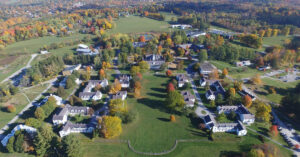
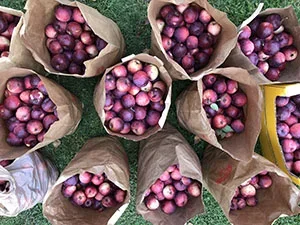
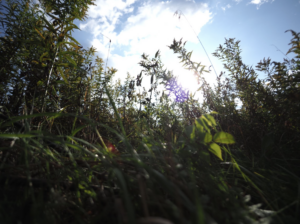
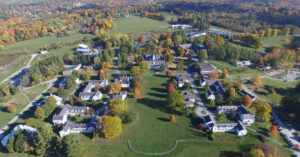
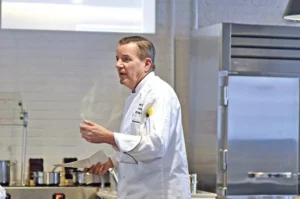
Be First to Comment